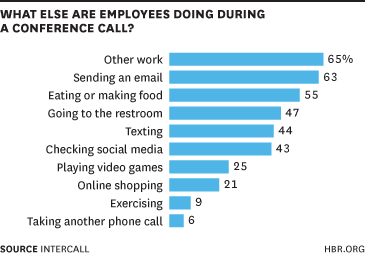4 Ways to Create an Engaging Presentation for the Online Classroom

2020 was a terrible year. The Covid pandemic brought chaos and destruction in its wake. There was a massive loss of lives and livelihoods which, unfortunately, continues in 2021.
As of May 2021, there have been over 154 million corona cases worldwide. 3.2 million people have lost their lives and the figures keep rising.
The education sector also had to deal with the impact of the pandemic. Stay at home orders resulted in the closure of schools in many countries all over the world. Over 1.2 million children found themselves out of the classroom.
Yet, out of the destruction was great learning. Human beings are resilient and will look for a way to survive and continue living. The digitization of education became the new normal for both educators and students. Technology came to re-shaping the conventional classroom mode to a blending learning style.
But therein lies another challenge, how can a teacher keep e-learners interested in the content? Well, engaging presentations is one way. Our article will show you how to come up with them.
Contents
ToggleStart by Understanding the Challenges of Running an Online Classroom
The advantage of a physical classroom is the students do not have too much leeway with distractions. They have to sit in the classroom and listen to what you have to say. The same does not apply to online classrooms.
Research published in the Harvard Business Review has some interesting insights. The graph below summarizes what happens during a conference call with remote workers.

Now, these are adults we are talking about; you can only imagine how bad it gets with kids. First, they are in the home environment, which is full of more interesting things to do. Even for online classes, once they disable the camera, you have no idea what they could be doing.
The biggest challenge you have is to keep their attention. You have to be strategic about your delivery and the design of the presentations. Here is how.
1. Create Engaging Presentations
You want presentations that are effective, interactive, and engaging. It can be difficult to start from scratch. But, thanks to programs like Microsoft Office, you have access to free PowerPoint templates. The wide range of templates can help make your presentation visually attractive.
Customizing them is easy, giving you a lot of flexibility with what you can do. Include audiovisual cues such as animations, images, and videos to make the content more interesting. It will be difficult to keep the attention of kids with slides full of text.
Another good idea is to use voice overs on the slides. It frees you from having to talk throughout the lesson. The students will also find it convenient because they do not have to read the content on the slides.
2. Increase Interaction with the Right Authoring Tools
The reality is, coming up with presentations is not easy. The digitization of education might have brought technology to your aid but even with fantastic templates, you will still find yourself spending hours doing the work. The beauty of living in the 21st century is you have access to technological innovations to make work easy.
There are tons of e-learning authoring tools that will make your presentations more dynamic. Such include Adobe Captivate, Elucidat, and Gomo, to name a few. With these tools, you get help with creating digital training content that helps increase interaction in an online class.
You can also convert your lessons into eLearning formats that you distribute to the students via the web. Now here is the good part. Most are easy to use and have features such as drag-and-drop interfaces that will have you doing presentations in a very short time. You save on time and avoid the frustration of doing everything from scratch.
3. Work on Your Delivery and Content
When presenting to remote learners, it is crucial to work on your delivery. Remember, you do not have the advantage of a physical presence. Here are some things that can help.
- Avoid having an image instead of your face during the lessons. Going live allows for better interaction when the students can see you. Nonverbal cues are a powerful way to communicate. If all the students see is an image, you may not achieve a connection with them.
- It is easy to go into a monologue when teaching online. Many e-learners tend to be passive and will not talk unless you goad them. You may also be guilty of only engaging with those that are very active. Ensure you include everyone in the discussions. Call them by name, ask questions and encourage comments.
- Have a clear structure to the programs. Do not overload the learners with information. Prioritize what is important and focus on that.
- Have a good mix of your content to cater to the different learning needs of your students. Some will understand video content better, while others prefer to read. It starts with having a good understanding of your students.
- Break down your lessons into small, easy-to-digest chunks. Having hundreds of slides may result in boredom, and you will not achieve the results you hope for.
4. Bring the Fun to Learning.
Learning does not need to be boring or rigid. Incorporate e-learning games to increase engagement and interaction. Your students get to learn in a fun way, which can lead to better retention.
The best part about it is that there are so many games covering different subjects. Further, you have the option of age-specific ones, depending on the class you are teaching.
Incorporate some stories and real-life scenarios into your lessons. Stories make content easier to digest and remember. Encourage your students to discuss the different scenarios within the stories. It helps encourage creativity, problem-solving, and collaboration.
It may surprise you how much the students enjoy the sessions. You may even get the very quiet or passive ones to participate.
Final Thoughts
Engaging presentations are critical for online classrooms. You must create an environment that allows for interaction and engagement. Take advantage of free slide templates to create the lessons. Include audiovisual cues to make the slides more interesting.
Take advantage of technology to make the lessons more dynamic. eLearning games, for example, remove the rigidity from lessons while imparting great knowledge. Further, it gives everyone, including the quiet ones, an opportunity to participate.
You may like this
6 Best Tools To Give A Winning Presentation From Anywhere
How PowerPoint Design Agencies Create Killer Presentations for Your Business
Recommended For You
Tips on How to Write Urgent Essays In Hours Quickly
Most Inside
Most Inside offers high-quality recommendations and valuable updates to enhance all aspects of your life, providing premium guidance and enriching experiences.




